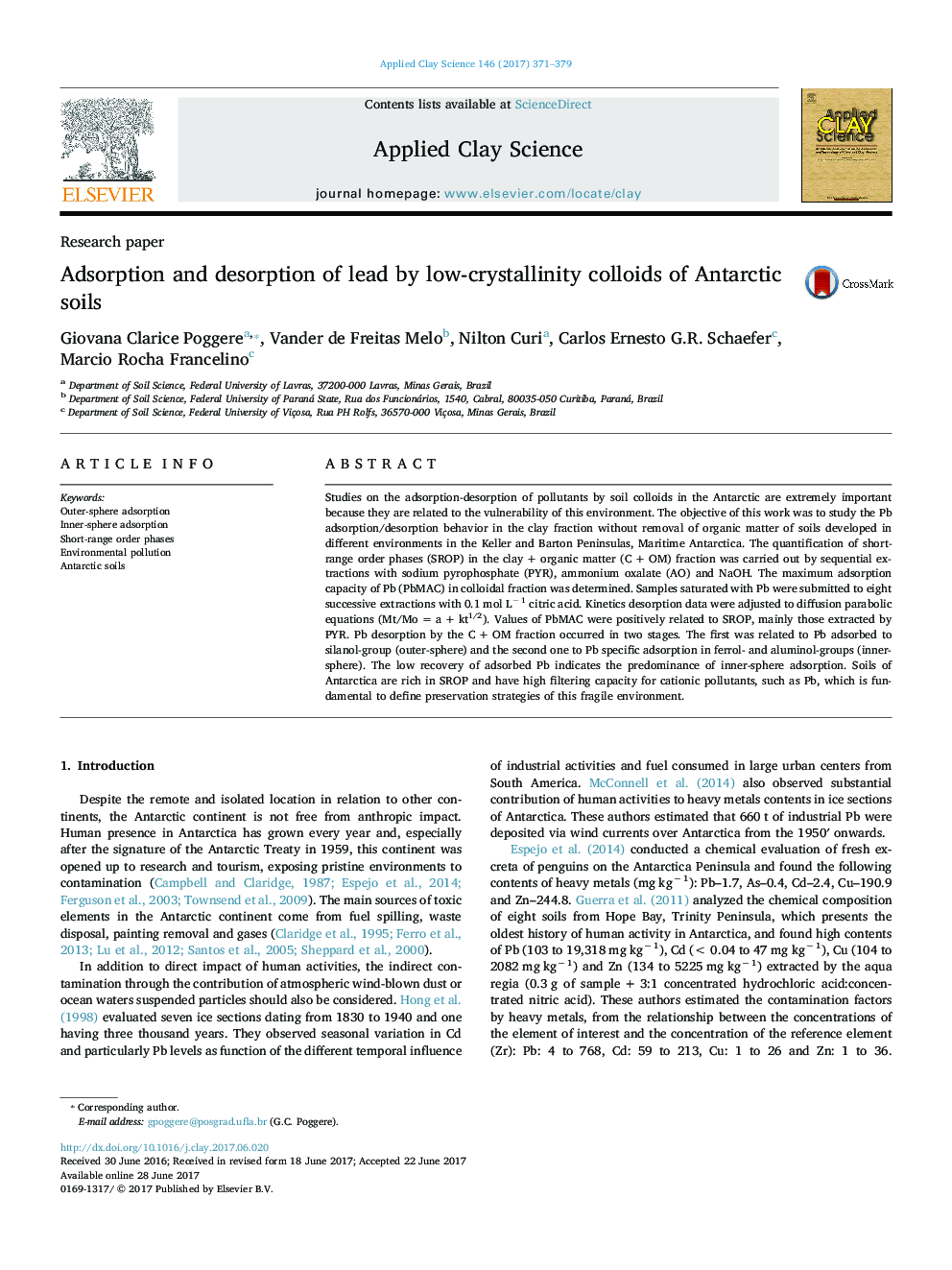| Article ID | Journal | Published Year | Pages | File Type |
|---|---|---|---|---|
| 5468865 | Applied Clay Science | 2017 | 9 Pages |
Abstract
Studies on the adsorption-desorption of pollutants by soil colloids in the Antarctic are extremely important because they are related to the vulnerability of this environment. The objective of this work was to study the Pb adsorption/desorption behavior in the clay fraction without removal of organic matter of soils developed in different environments in the Keller and Barton Peninsulas, Maritime Antarctica. The quantification of short-range order phases (SROP) in the clay + organic matter (C + OM) fraction was carried out by sequential extractions with sodium pyrophosphate (PYR), ammonium oxalate (AO) and NaOH. The maximum adsorption capacity of Pb (PbMAC) in colloidal fraction was determined. Samples saturated with Pb were submitted to eight successive extractions with 0.1 mol Lâ 1 citric acid. Kinetics desorption data were adjusted to diffusion parabolic equations (Mt/Mo = a + kt1/2). Values of PbMAC were positively related to SROP, mainly those extracted by PYR. Pb desorption by the C + OM fraction occurred in two stages. The first was related to Pb adsorbed to silanol-group (outer-sphere) and the second one to Pb specific adsorption in ferrol- and aluminol-groups (inner-sphere). The low recovery of adsorbed Pb indicates the predominance of inner-sphere adsorption. Soils of Antarctica are rich in SROP and have high filtering capacity for cationic pollutants, such as Pb, which is fundamental to define preservation strategies of this fragile environment.
Related Topics
Physical Sciences and Engineering
Earth and Planetary Sciences
Geochemistry and Petrology
Authors
Giovana Clarice Poggere, Vander de Freitas Melo, Nilton Curi, Carlos Ernesto G.R. Schaefer, Marcio Rocha Francelino,
